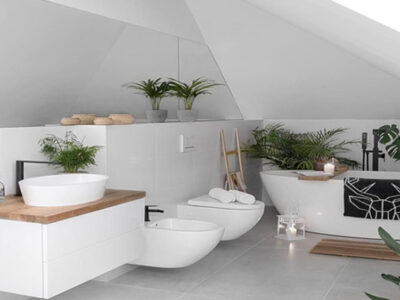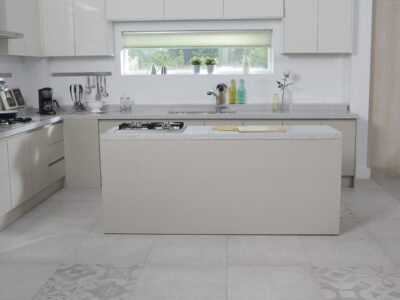When designing or building for areas prone to moisture such as kitchens, bathrooms, or outdoor environments the materials you use need to withstand the test of time and the elements. In these situations, marine plywood and waterproof plywood often come up as top contenders. But while the terms are sometimes used interchangeably, they are not exactly the same.
Understanding the key differences between marine plywood and waterproof plywood can help ensure you choose the right material for your next project one that delivers performance, durability, and peace of mind.
What Is Marine Plywood?
Marine plywood is a high-grade, waterproof plywood designed specifically for use in wet or high-humidity environments. It is manufactured using high-quality hardwood veneers and bonded with waterproof adhesives that comply with stringent standards. Marine plywood is often used in boat construction, dock installations, and outdoor furniture not just because it resists moisture, but because it offers superior strength and durability in extreme conditions.
Key Features of Marine Plywood:
Superior Water Resistance: Made with high-grade phenolic resin (boiling waterproof glue), marine plywood can withstand long-term exposure to water without delaminating.
Void-Free Core: Unlike standard plywood, marine plywood has minimal or no gaps between the veneer layers, reducing the risk of water intrusion.
High Strength: It uses dense hardwood veneers for exceptional structural integrity.
Fungal Resistance: Often treated to resist rot, mold, and mildew in humid environments.
What Is Waterproof Plywood?
Waterproof plywood, often referred to as BWR (Boiling Water Resistant) or BWP (Boiling Waterproof) plywood, is an engineered wood panel treated to resist moisture. While it may not meet the extreme performance standards of marine plywood, waterproof plywood is suitable for most interior applications where occasional exposure to water or humidity is expected.
Key Features of Waterproof Plywood:
Moisture Resistance: Manufactured with synthetic resin adhesives (like phenol-formaldehyde or melamine), waterproof plywood can resist moisture to a high degree.
Affordable Alternative: Less expensive than marine plywood while still offering solid water-resistant properties.
Ideal for Interiors: Suitable for kitchen cabinets, bathroom vanities, and furniture that may be near water but not submerged.
Available in Multiple Grades: Comes in commercial, BWR, and BWP grades for different levels of exposure.
Where to Use Marine Plywood
If you’re dealing with a project where constant or prolonged water exposure is expected, marine plywood is the best investment. Here are some ideal use cases:
1. Boat Building and Marine Structures
As the name suggests, marine plywood is the go-to material for constructing boats, jetties, and docks. It handles long-term submersion and doesn’t warp easily.
2. Bathroom Flooring and Wet Walls
In areas where water can linger or seep into floors and walls like bathroom wet zones marine plywood offers unmatched protection.
3. Outdoor Furniture and Fixtures
When used for garden benches, swing sets, or outdoor cabinetry, marine plywood holds up through changing weather, rain, and high humidity.
4. Roof Underlayment
For roofing structures where moisture penetration is a risk, marine plywood adds durability and water resistance.
Where to Use Waterproof Plywood
Waterproof plywood is ideal for interior or semi-exterior applications where high humidity or occasional water contact is expected.
1. Kitchen Cabinets and Counter Bases
Waterproof plywood is commonly used in modular kitchens, especially around sinks or dishwashers where splash exposure is likely.
2. Bathroom Vanities and Storage Units
Bathrooms often deal with steam and water, but unless materials are in direct contact with water, waterproof plywood performs well.
3. Wardrobes in Damp Areas
For coastal homes or areas with high humidity, using waterproof plywood prevents warping and fungal growth in closets and wardrobes.
4. Office and Home Furniture
Desks, beds, and shelving units made with waterproof plywood resist occasional spills or cleaning moisture without damage.
Tips for Working with Waterproof and Marine Plywood
Regardless of which type you choose, good craftsmanship and finishing make a big difference:
Seal the Edges: Always seal plywood edges with paint, sealant, or edge banding to prevent moisture absorption.
Use Water-Resistant Adhesives: When joining or laminating, ensure adhesives used are also moisture-proof.
Finish with Waterproof Laminates or Paints: Surface treatments improve longevity and protect the plywood underneath.
Check for Certification: Especially for marine plywood, make sure the product complies with recognized quality standards (such as IS:710).
Sustainability Considerations
Eco-conscious builders and designers should look for plywood products that are:
FSC- or PEFC-certified
Manufactured using low-VOC resins
Made from responsibly harvested timber
Choosing sustainable marine or waterproof plywood helps reduce environmental impact and supports better air quality in enclosed spaces.
Final Thoughts: Which One Should You Choose?
When it comes to choosing between marine plywood and waterproof plywood, it all boils down to your project’s requirements:
Go with marine plywood when:
The plywood will be in constant contact with water or submerged
You need the highest level of durability and structural strength
The area is exposed to outdoor weather or high humidity long term
Choose waterproof plywood when:
You’re working on interiors with occasional water exposure
You want a cost-effective yet reliable solution
The project requires good moisture resistance but not marine-grade toughness
Each of these materials brings unique strengths to the table. By selecting the right one, you not only ensure the longevity of your design but also create a safe, strong, and sustainable space.








Comments